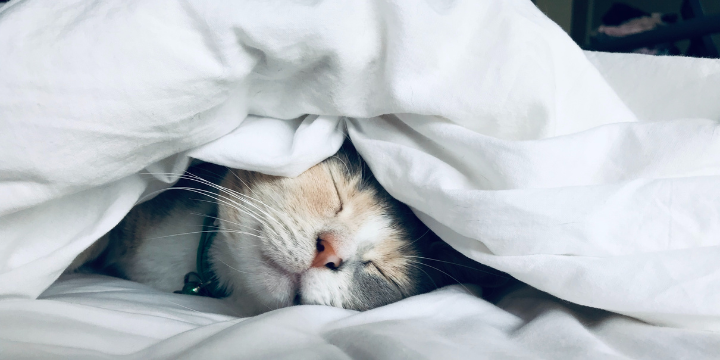As pet owners, we often find ourselves marvelling at the seemingly mysterious behaviour of our beloved dogs and cats. One question that has intrigued many curious minds is whether our furry companions experience dreams during their slumber, similar to humans. The idea of our pets chasing butterflies or chasing invisible prey while they sleep has captured our imagination.
Understanding Animal Sleep Patterns
Like humans, dogs and cats have different stages of sleep. These stages are broadly classified into two categories: Non-Rapid Eye Movement (NREM) sleep and Rapid Eye Movement (REM) sleep.
NREM Sleep: During NREM sleep, the body and brain gradually relax. It is divided into multiple stages, each with different levels of relaxation. During the deeper stages of NREM sleep, the body undergoes physical repair and growth, making it vital for overall health.
REM Sleep: REM sleep is the stage associated with dreaming in humans. During this phase, the brain activity increases, and the eyes move rapidly. Interestingly, most vivid dreams occur during REM sleep.
Do Dogs Dream?
Numerous studies and observations suggest that dogs do, indeed, experience dreams during their sleep. Similar to humans, dogs go through various sleep cycles, including NREM and REM stages. While it is challenging to ascertain the content of their dreams definitively, research on brain activity during REM sleep indicates similarities between humans and dogs.
Researchers have conducted experiments on sleeping dogs, monitoring their brain activity using electroencephalography (EEG). The results showed patterns resembling human REM sleep, suggesting that dogs likely experience dreaming. Additionally, pet owners may have noticed their dogs twitching, paddling their legs, or making muffled noises during sleep, which could be indicative of them reenacting their dream experiences.
Do Cats Dream?
Cats, too, demonstrate similar sleep patterns as dogs and humans. Like dogs, they experience both NREM and REM sleep stages. The evidence supporting the idea of cats dreaming is more anecdotal than scientific, but it is compelling.
Cat owners have observed their feline friends displaying behaviours consistent with dreaming. During sleep, cats may twitch their whiskers, move their paws, or even emit soft vocalisations, indicating they might be actively engaged in dream scenarios.
While we cannot fully enter the minds of our furry companions to experience their dreams, it appears that the phenomenon of dreaming is not unique to humans. Both dogs and cats exhibit behavioural patterns during sleep that are remarkably akin to the manifestations of dreams in humans.
Furthermore, studies on other animals, such as rats and birds, have also revealed similar sleep patterns, leading to the belief that dreaming may be a widespread phenomenon among various species.



